School District of Palm Beach County
HIGH-QUALITY INSTRUCTIONAL MATERIALS:
High-quality, academically rigorous instructional materials
Promising Practice:
Access and opportunity Framework: Increasing Access to High-Quality Materials and Instruction
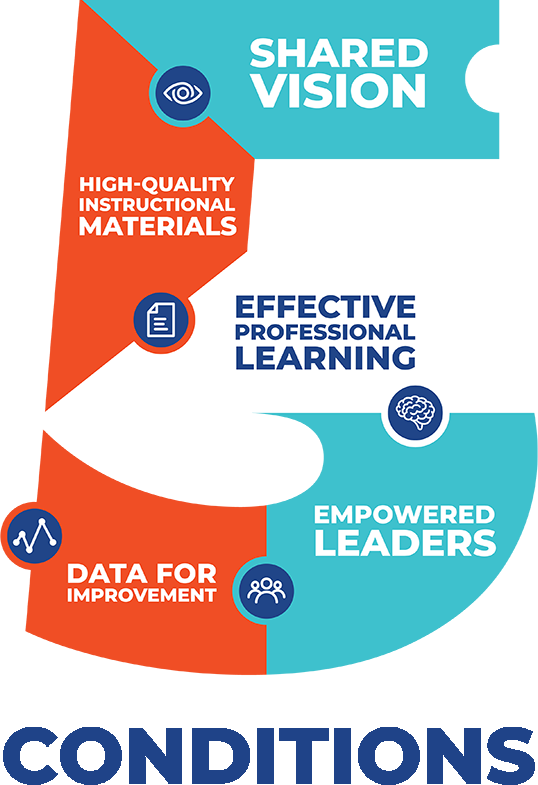
Our goal for this series of Cases for Impact is to provide education leaders and teachers with knowledge and resources needed to ensure that great teaching and learning is consistently realized in all Florida schools. We believe that if education leaders are empowered to know how to recognize, support, and scale excellent teaching practices, we will see tangible results in the classroom.
In partnership with the Florida Association of District School Superintendents (FADSS), Impact Florida launched the Districts for Impact initiative in 2019 to support Superintendents’ focus on supporting excellent instruction within their systems, for all kids. This series of Cases for Impact highlights the promising instructional practices gleaned from the inaugural cadre of five Florida districts.
While we recognize that there are many conditions that factor into a student’s ultimate success, Impact Florida focuses on the factors that leaders and educators can control in their classrooms to improve student engagement and learning. We call these factors the Five Conditions That Support Great Teaching.
This Case for Impact Profile deconstructs how the School District of Palm Beach County (SDPBC) increases access to high-quality, and academically rigorous instructional materials.
Access and Opportunity are Both an Outcome and an Action
SDPBC has been a top-rated district in Florida since 2005, receiving an “A” rating for six of the past 10
years, based on the Florida Department of Education’s district grade reporting. Despite this success, the district continued to see achievement gaps for minority students and students from low-income households. The district recognized that if it wanted to address these gaps, they must address the systematic decision-making processes that drive inequitable access to high-quality curriculum and instruction. SDPBC developed the following theory of action as a foundation of their work:
If our district centers on providing equitable access to high-quality, culturally responsive, academically rigorous curriculum and instruction, then student achievement will increase and opportunity gaps will close for low-income and students of color.
In 2015, SDPBC unveiled a five-year strategic plan with four accompanying themes to guide their work:
- Effective instruction to meet the needs of students
- Positive and supportive school climate
- Talent development
- High-performance culture
The district looked at 10 years of their Advanced Placement (AP) and Cambridge Advanced International Certificate of Education (AICE) enrollment data to get a better understanding of the performance and access and opportunity gaps across student demographic groups. After digging deeper, the district found cases where students of different races with the same grade point average were not afforded the same opportunity to take similar advanced coursework because course enrollment requirements varied across schools. With this evidence, SDPBC leaders found a need to publicly name implicit bias as an explicit systemic barrier leading to inequitable access to accelerated coursework. In the district’s new strategic plan, access and opportunity was highlighted as “[both] an outcome and an action.”
ABOUT THE SCHOOL DISTRICT OF PALM BEACH COUNTY (SY 2019–20)
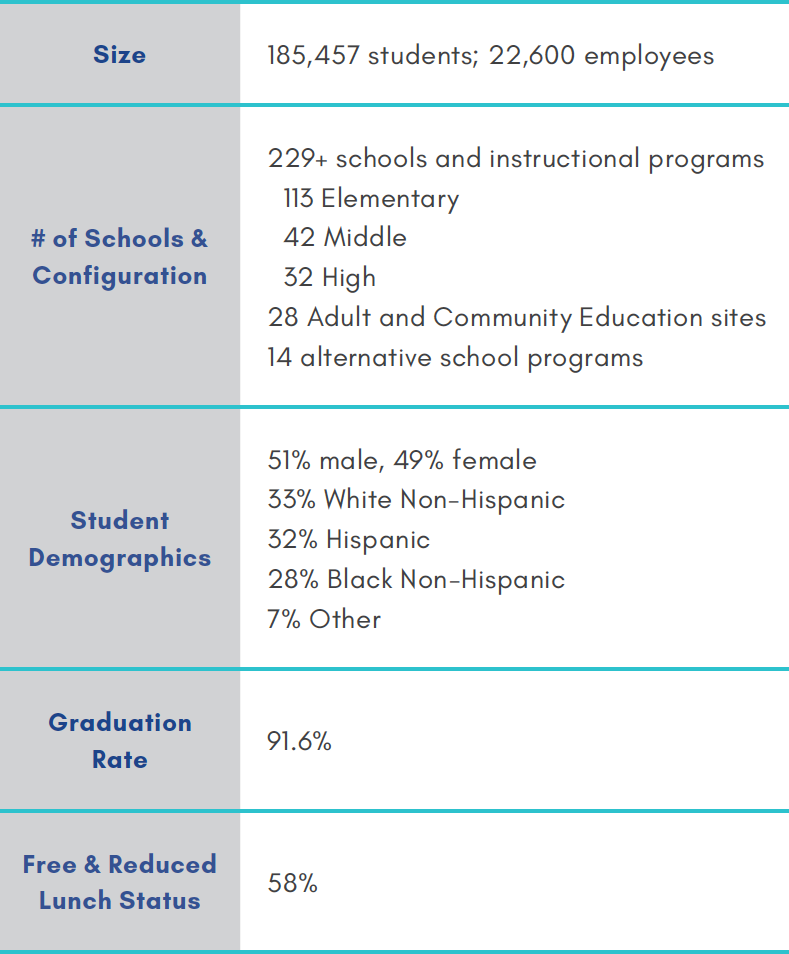
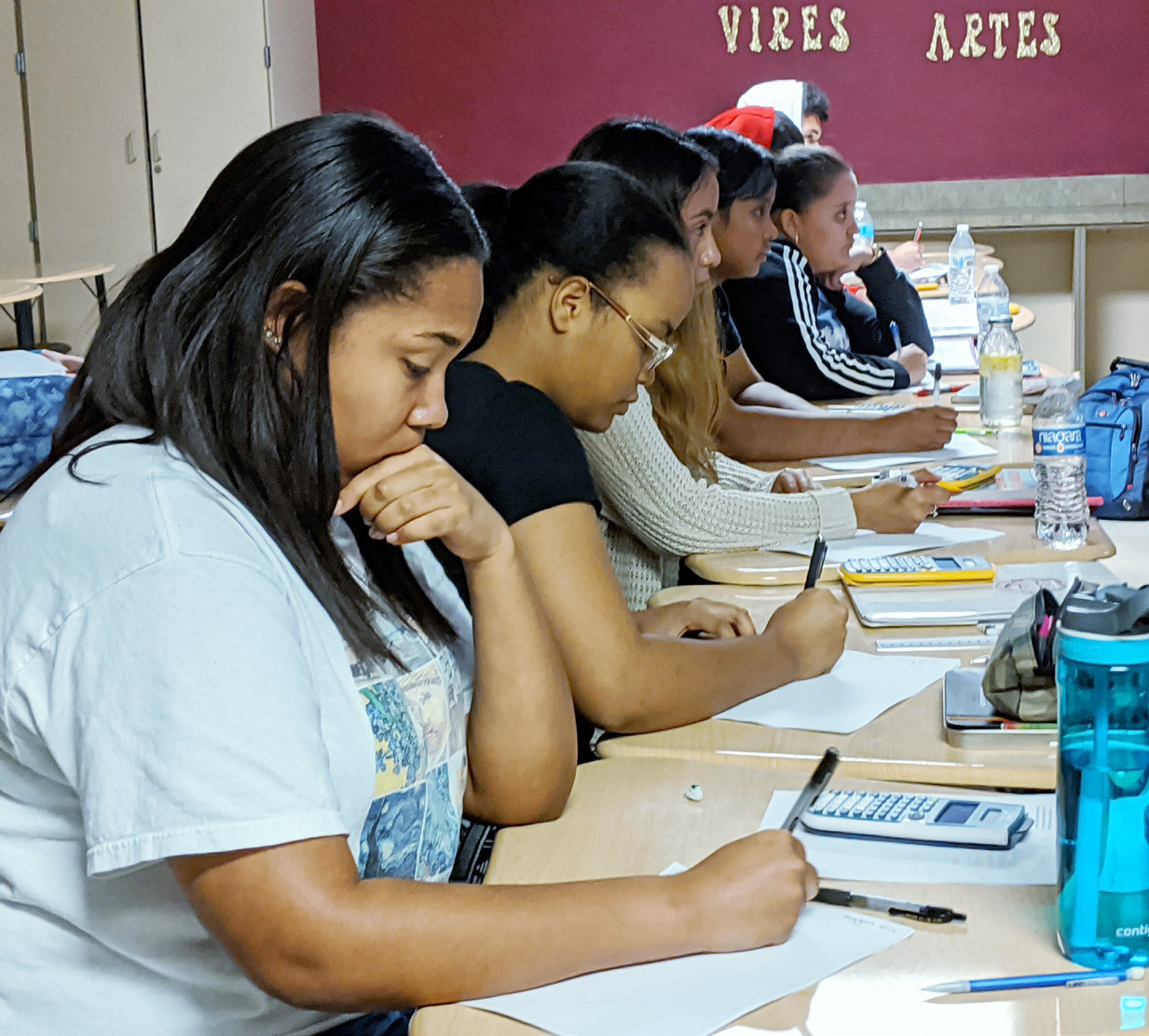
SDPBC’s Promising Practice: Increasing Equitable Access to High-quality Materials and Instruction
Building on the work of the strategic plan, SDPBC decided to focus on three key pillars: increasing access to accelerated coursework, leveraging culturally responsive instructional practices, and providing high-quality instructional materials — to address access and opportunity as an action. These three pillars determine and prioritize the district’s approach to moving the needle on access and opportunity gaps (Fig. 1).
Additionally, the district embarked on a year-long process to develop an Access and Opportunity Policy, developed in collaboration with the Palm Beach County School Board, representatives from school leadership, teachers, and students to outline the districts’ commitments. The policy was adopted by the Board in October 2018.
FIG. 1 | SDPBC’S THREE PILLAR APPROACH
TO REALIZING access and opportunity
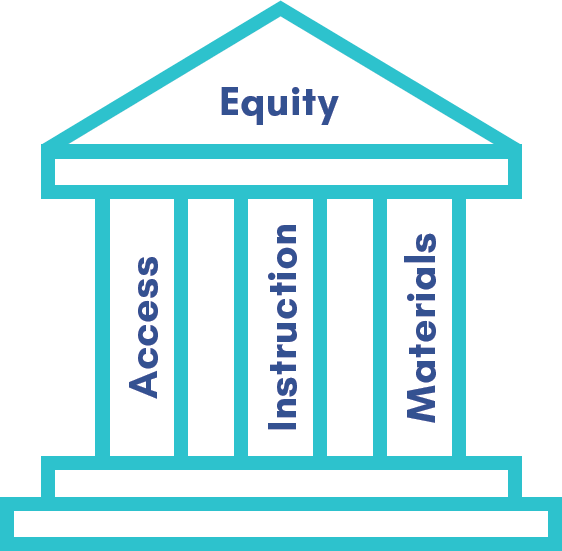
The policy addresses “existing practices and procedures that have inhibited success for some students. These barriers have translated into low academic achievement for certain groups of students, including but not limited to: African American, Haitian, of other African descent, Hispanic, Latino, Guatemalan Mayan, English Language Learners, economically disadvantaged, lesbian, gay, bisexual, transgender, or questioning (LGBTQ), and students with disabilities. This is neither a coincidental occurrence or an accurate reflection of how these students are capable of performing.”
– Excerpt from SDPBC’s access and opportunity Policy
Actualizing Access and Opportunity Part I: Increased Access to Acceleration
Expansion
The district grounded implementation of their access and opportunity policy around the belief that exposure to accelerated course work created vital opportunities for students. The philosophy embraced expansion; guiding school leaders to focus on increasing participation instead of limiting access to keep performance data high. In fact, now when school leaders see 100% pass rates in courses they see it as an opportunity to enroll even more students to create more opportunities. The 100% pass rate is an indicator that there may be other students in the school who could benefit from access and exposure to a particular course or some student groups who may have been unintentionally left out.
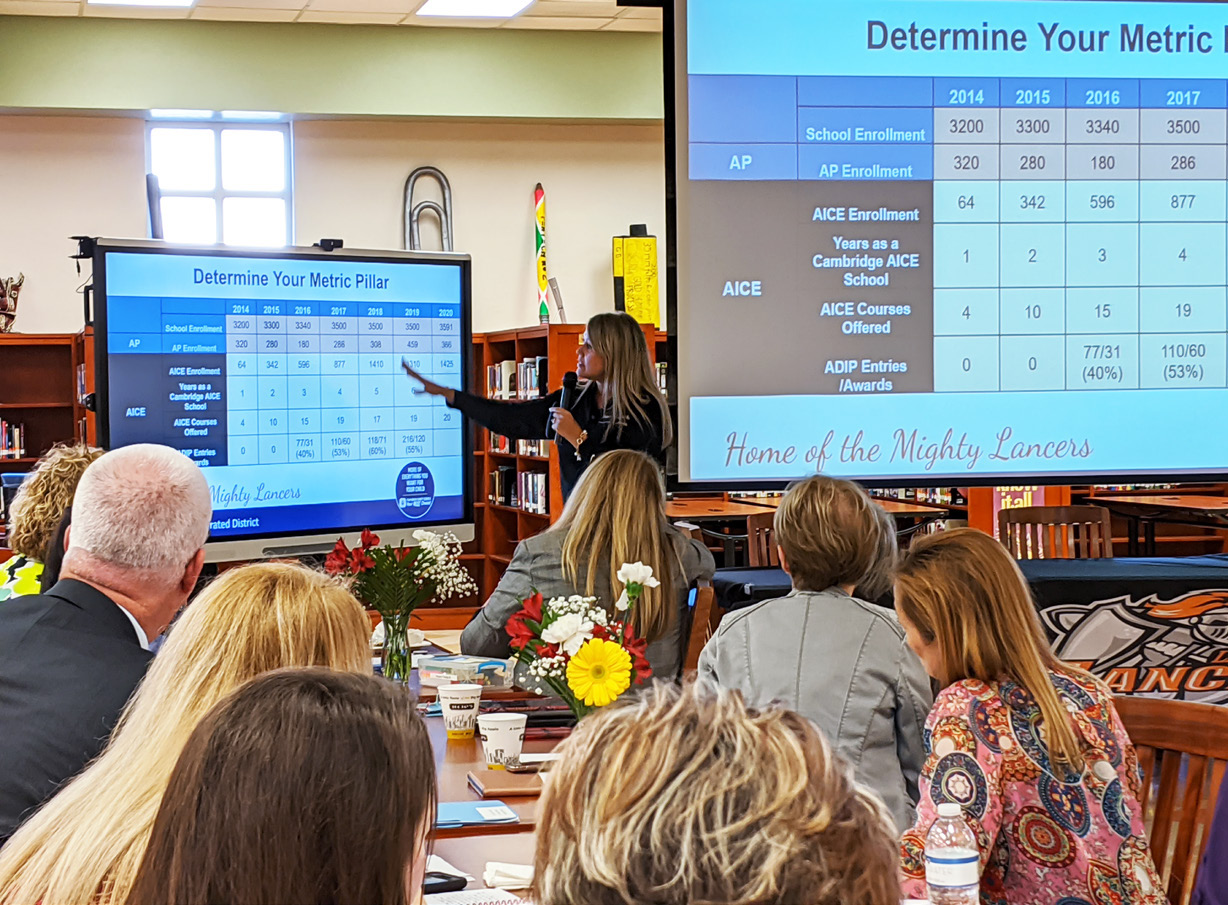
"The goal is for all classrooms, including advanced courses, to look like a microcosm of the courtyard where all students are represented—with respect to gender, ethnic background, native language, and learning ability."
- Melissa Patterson, Principal of John I. Leonard High School
Masterboard Analysis
SDPBC uses the Masterboard process to track its progress towards actively dismantling systemic barriers that exist as a result of long held beliefs about specific groups of students: the first pillar of SDPBC’s Access and Opportunity Framework.
The Masterboard process (Fig. 2) establishes a dedicated meeting time, four times per year, for school leaders to identify and address disproportionate enrollment rates in advanced courses and dual enrollment. It provides an “access and opportunity check” of course enrollment data against school enrollment data — a more relevant comparison for schools than district or state comparisons. While the process has some fundamental structures in place, it is malleable enough to meet the needs of specific school contexts. Each meeting focuses on a different aspect of the Plan- Do-Study-Act cycle.
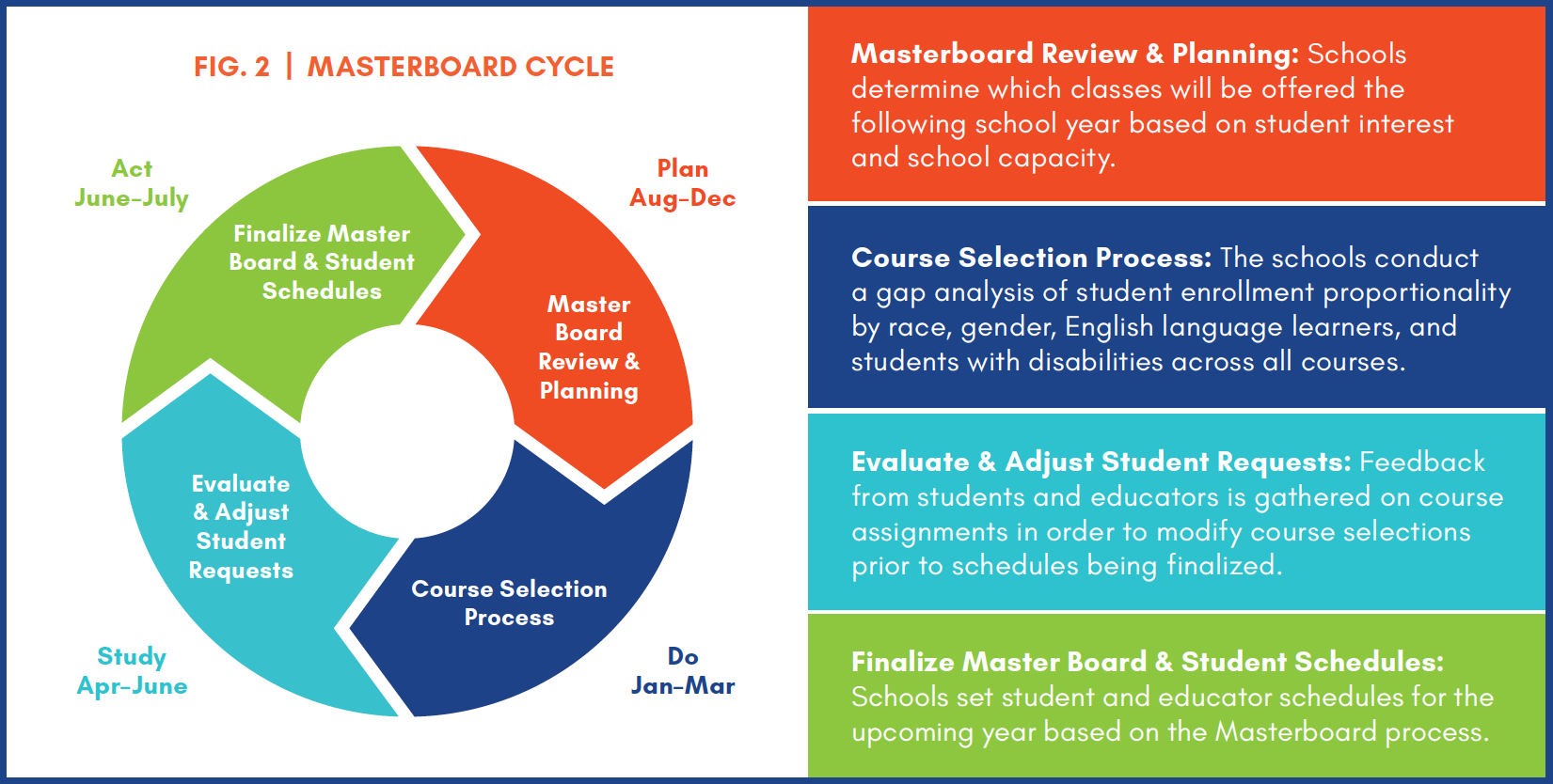
The Masterboard gives school leaders the space to assess gaps in exposure opportunities and targeted support needed by specific students and subgroups. Attrition rates are tracked to see which students are changing their courses, which student groups have the highest and lowest attrition rates, and which instructors have the highest and lowest attrition rates. It is then used to identify which students, subject areas, educators, or classrooms need additional support and resources. The process also effectively eliminates reliance on assessment data from the Florida State Assessment (FSA) as a “gatekeeper” for students to access advanced courses if they have the desire to pursue it.
Actualizing Access and Opportunity Part II: Professional Learning and Supports for Student-Centered Instruction
To ensure students and teachers would be successful with expanded access to accelerated courses and coursework, the district began training teachers a full year before implementation to address the second pillar of the access and opportunity Framework: instruction. Teachers received content-specific professional learning for AP, International Baccalaureate (IB), or AICE courses. Additionally, roundtables were created where teachers could share resources virtually and meet twice a year to share best practices and approaches for scaffolding and meeting the needs of all students. Students were also supported through Advancement Via Individual Determination (AVID) courses, which teach problem-solving and critical thinking skills, resulting in more confidence to tackle rigorous advanced course offerings.
The district also provided two additional professional learning opportunities — Racial access and opportunity Institute and Courageous Conversations to help bolster the mindset shift needed to address instructional changes in the classroom. They also trained school staff to create more collaborative environments, how to focus on student engagement and participation, and improve plans for differentiation. These sessions were required for district leadership and principals, strongly suggested for assistant principals, and made available for teachers and community leaders. The district and school leaders kept themselves accountable by reporting progress on student-centered instruction and support to the School Board and the public.
Leveraging Language
With a diverse community of learners in mind, schools began to leverage the rigor of existing programs such as AICE and AP courses and utilize the on-site capabilities of staff in the form of bilingual teachers. Although the final exams are in English, SDPBC found that advanced coursework can be more accessible to students when taught in their native language, increasing access to the content by eliminating the language barrier. John I. Leonard High School, a public high school in Palm Beach County, currently teaches some AICE and AP courses in Spanish and has a plan to offer some advanced courses in Creole to better serve their Haitian student population. This strategy helps schools focus on the full potential in each student, not their circumstances or other barriers.
SDPBC schools also began inviting parents to participate in add/drop conversations related to student schedule modifications around accelerated courses to better support students in the course selection decisions. The district offered Language Labs to parents, an English to Speakers of Other Languages (ESOL) program for adult learners to eliminate language barriers for parents engaging in their childs’ educational decisions. Students and parents both became more comfortable with pursuing advanced courses because of the additional support provided by schools.
Actualizing Access and Opportunity Part III: High-Quality Instructional Materials
The third pillar of the Access and Opportunity Framework is about ensuring that all SDPBC students use high-quality and engaging instructional materials, setting a new standard for curricular materials to be both academically rigorous as well as relevant to its student audience. First, the district developed a systematic process of assessing the rigor of curricular materials consistently across the district, so teachers could focus on their ability to teach students instead of creating and sourcing the curricula materials themselves. Next, the district decided to revise their curriculum adoption rubric highlighting the importance of representation in texts.
Identifying High-Quality Instructional Materials
In 2016, SDPBC joined the Florida Implementation Network, along with three other districts to focus on improving standards-aligned instruction in partnership with UPD Consulting. As part of this work, SDPBC decided to take an in-depth look at the alignment of their elementary English Language Arts (ELA) curriculum and instructional practices to the standards. The analysis found significant variation within and across the schools.
There was evidence of:
- Practitioners using different materials (daily and unit lessons, supplemental assessments, texts) and making those decisions independently, some at the school level and some at the individual classroom level;
- Teachers having access to a lot of resources that were hard to navigate and little information about what’s available through the district; and
- Principals with varying degrees of confidence and involvement in the instructional choices their teachers were making.
These findings were clear indications of the need for streamlined access to standards-aligned curricular materials and texts as well as professional development to support teachers implementing these materials effectively in classrooms. The district wanted to help teachers spend less time on determining what to teach and more time focused on how to teach.
SDPBC worked with UPD Consulting to conduct research and identify standards-aligned curriculum to adopt. They used Ed Reports and the Instructional Materials Evaluation Tool (IMET), a free resource to evaluate the alignment of instructional materials to the standards, to find Core Knowledge Language Arts (CKLA). Next, the team launched a pilot focused on second grade teachers in five elementary schools. The pilot introduced the new curriculum to classrooms and also provided professional development support to teachers implementing the new materials. Over the first three years of implementation, SDPBC has scaled the use of CKLA across grades K-3 in 29 schools.
"While I was reading their final pieces, I realized 2nd graders are far more capable than I previously imagined."
- Second Grade Teacher, Pilot Program Participant
Honing in on High-Quality: Ensuring Culturally Responsive Materials
Based on the learnings from their ELA pilot (Fig. 3), SDPBC began an intentional process of ensuring their instructional materials aligned to the aims of their access and opportunity policy, and were culturally responsive to the diverse perspectives of SCPBC students.
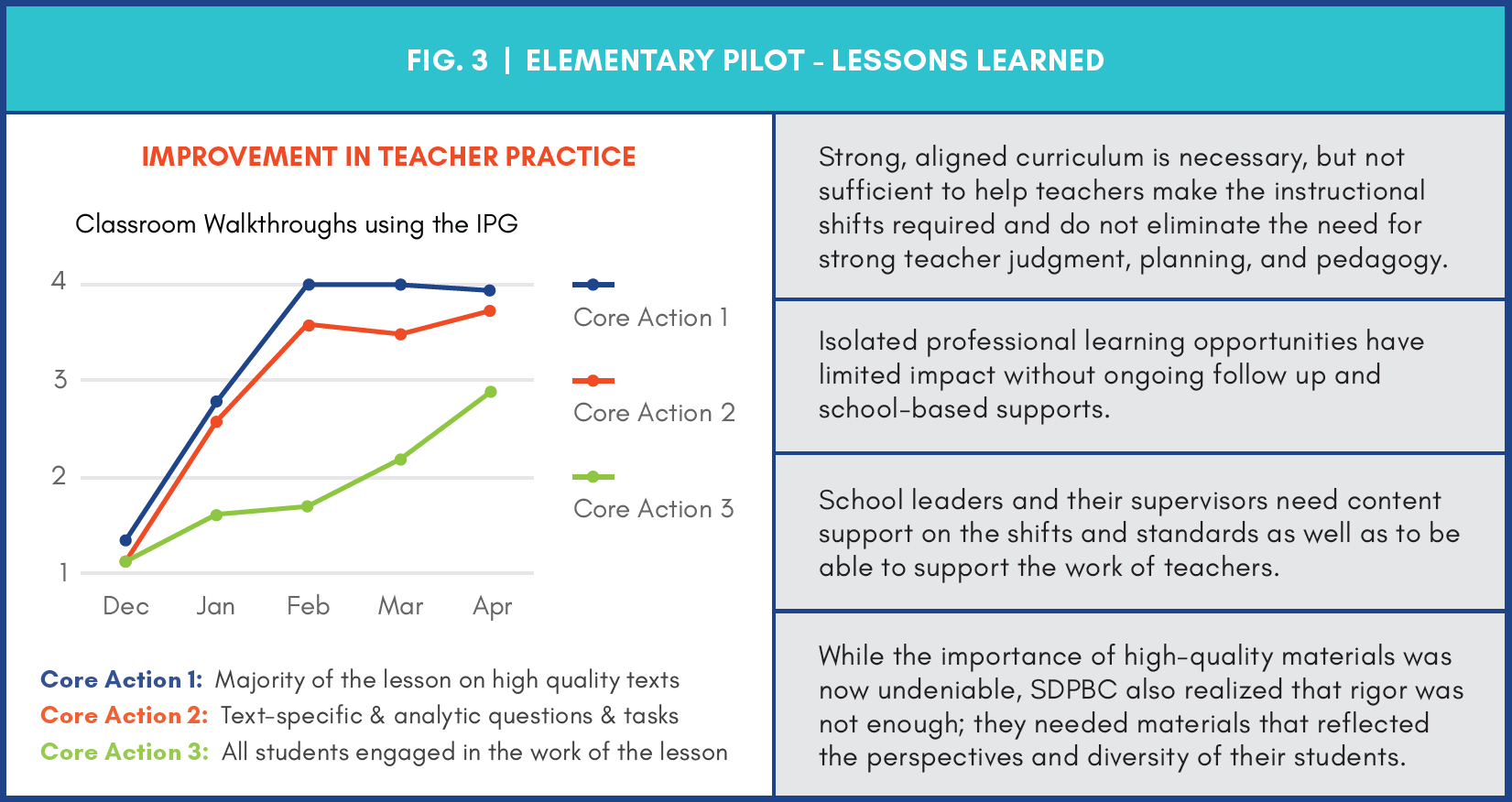
In preparation for the upcoming curriculum adoption cycle, SDPBC engaged community stakeholders to collaboratively develop an ELA Curriculum Adoption Rubric to identify curricula that are “a mirror and a window, so that students both see themselves in the materials and can see beyond themselves into the world through the materials.” said Diana Fedderman, Assistant Superintendent of Teaching and Learning.
District leaders worked alongside numerous community organizations for nine months to develop the rubric, with the Coalition of Black Student Achievement and Hispanic Education Coalition ultimately signing their organization’s names to the rubric, alongside SDPBC, reflecting the collective ownership and motivation behind development of the rubric. “Every word is intentional. Every word had to be agreed on by all parties at the table,” explained Ms. Fedderman. The rubric is built around the foundational elements of the Core Actions outlined in The Instructional Practice Guide, but is focused on ensuring text is inclusive, representative, and relevant to the student population at SDPBC.
The team took a holistic approach to the rubric by giving all categories equal weight. They did not want to give the wrong message to the publishers that one category was valued more than another. The rubric is both standards- driven and standards agnostic.
"We’re utilizing high-quality instructional materials to build access and opportunity. We are very deliberate in making sure that the materials are culturally responsive for teaching and learning, for all ethnicity groups. And that is something that we are very committed to and will work alongside with our board, community groups, parents, and students."
- Glenda Sheffield, Chief Academic Officer
With more than 229 schools and instructional programs serving more than 176,000 students, SDPBC intends on leveraging its size with publishers so that they have more input on the products they purchase. SDPBC has already begun to share the rubric with publishers and has met with them to provide additional context on key terms used in the rubric, the importance of the rubric, and their non-negotiables. The upcoming adoption cycle will be the first time the district is using this rubric, and they are looking forward to learning from the process. SDPBC hopes the rubric will challenge publishers to think more critically about who their products are serving and excluding—a simple act that could impact millions of children worldwide.
Curriculum Development
Additionally, the Teaching and Learning Department at SDPBC developed high-quality courses to meet the needs of their student population. The following courses have been approved by the State and are free and available for use to all Florida schools:
Looking Ahead
Under the leadership of Dr. Donald Fennoy II, SDPBC schools continue to see academic gains. Data released during the 2018–2019 school year showed that SDPBC schools continued to increase and the graduation rate is at an all-time high of 91.7%. The 5-year graduation rate for low-income and minority students has increased significantly, namely Black students (14.5%), Hispanic students (8.6%), English Language Learners (17.8%), and Students with Disabilities (18.5%). The SDPBC has the second highest graduation rate of any large urban school district in the State of Florida: 86.9% in 2018–19.
Today, SDPBC’s foundational vision around access and opportunity is the lens through which each instructional decision is made in Palm Beach County. While the district is proud of their progress towards providing more opportunities for students to succeed, they realize there is more work to be done. SDPBC plans to continue learning and refining their approach to providing equitable access to high-quality instructional materials and remain open to feedback about their missed opportunities and blindspots.
Connecting To Success: The SDPBC Perspective Access and Opportunity During A Global Pandemic
With the move to distance learning as a result of the coronavirus in the spring of 2020, SDPBC identified that students lacking Internet access was a major access and opportunity challenge. As the tenth-largest school district in the country, when parent surveys showed that 38% of students lacked access to devices for schoolwork and 15% lacked consistent Internet access, SDBCPC knew that their strategic focus on the access and opportunity of access had taken on a whole new meaning. This was especially poignant since SDPBC leaders knew the population lacking access likely included a number of students who already faced challenging circumstances before the pandemic.
“It was absolutely critical to us that we addressed — both immediately and with an eye to the long-term—the number of our students who lacked devices, and most critically, those without reliable access to affordable internet,” said Superintendent Dr. Donald Fennoy. “We have worked so hard as a district to create pathways of access to content that is critical for our students’ success. We could not let this pandemic stop our way of work.”
The district decided early on to avoid giving out paper packets to students, worried this would exacerbate the digital divide and the outcome gaps the district was working hard to close. “We felt we had to overcome that access barrier, instead of finding a workaround with paper packets. We could not risk losing those students,” Diana Fedderman, Assistant Superintendent for Teaching and Learning, stated. “Without access to instruction, they could ultimately lose that pathway to opportunity itself. We had to get those students back by getting them access, and then working to keep those students engaged with us. We could not let that worst-case scenario happen.”
Thus began an all-out campaign to achieve digital inclusion. SDPBC leaders advocated relentlessly on behalf of students and their families to the major internet providers in the area, asking they provide low- or no-cost Internet access for students. One of their earliest efforts to create immediate access while working on longer-term solutions included creating their own television channel of instruction that aired through a CBS affiliate and on the District’s television station, complete with a published “TV Guide” of when instructional content by subject and grade level was airing.
Longer-term efforts included SDPBC partnering with Palm Beach County to put antennas on existing, rarely used radio towers on school campuses. The antennas send a wireless internet signal to boosters placed on telephone poles in underprivileged areas identified by the district. Families in need of internet assistance received a permanent receiver, which distributes free WiFi throughout their homes; creating connectivity into the future. SDPBC also worked with philanthropic partners and local municipalities to fund digital inclusion efforts and the provision of devices, hotspots and access, aside from millions of dollars the district committed as well.
Simultaneously, SDPBC kept up their efforts to support teachers’ transition to distanced instruction and content, while upholding their high expectations for the student learning experience. They created scaffolds for educators to assist with remediation and acceleration, and created original content and virtual field trips educators could use. SDPBC also doubled-down on their belief in the importance of social-emotional supports for both students and educators, and are actively working to improve existing supports to attend more closely to issues tied to race, social justice and the trauma many have experienced during the coronavirus pandemic.
As SY 20-21 commences, SDPBC is one of four districts working with Impact Florida in a COVID Recovery Cadre that is focusing on student-level interventions and social-emotional supports. “We know that our efforts are better when we are working and learning alongside other leading districts,” Superintendent Fennoy stated. “It is not enough to just get our students access. Or assume they have access to enough. We will continue to strive to live out our vision for access and opportunity in SDPBC and we are proud of the efforts we have made to keep each and every student engaged with us, and on a pathway to success, no matter the circumstances we are facing.”
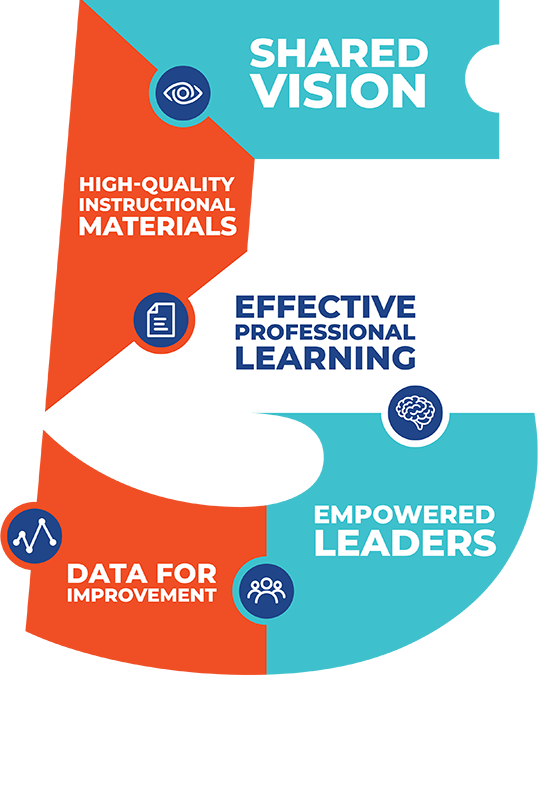
Reflection Questions
- What evidence of the Five Conditions That Support Great Teaching do you see in this case for impact?
- What systemic barriers exist within your school or district that create inequitable access to high- quality instructional materials? How could you use this Case for Impact as a guide to start dismantling those barriers?
- Does your district/organization have an Access and Opportunity Policy? How would it change your system’s work if you did?
- Do you have a rubric to evaluate your district or school’s instructional materials that attends to cultural responsiveness? How could the SDPBC rubric be useful to you, if not?
- If access and opportunity is a key piece of your district’s vision, what has grappling with COVID-19 challenges shown you about your students’ access to key instructional resources and opportunities? If access and opportunity is not a key strategic driver of your district’s shared vision, what has this pandemic made you realize about the need to include a focus on access and opportunity?
